C. Fanelli
AID
AI-Assisted Detector Design for the EIC E)
May 28, 2024Abstract:Artificial Intelligence is poised to transform the design of complex, large-scale detectors like the ePIC at the future Electron Ion Collider. Featuring a central detector with additional detecting systems in the far forward and far backward regions, the ePIC experiment incorporates numerous design parameters and objectives, including performance, physics reach, and cost, constrained by mechanical and geometric limits. This project aims to develop a scalable, distributed AI-assisted detector design for the EIC (AID(2)E), employing state-of-the-art multiobjective optimization to tackle complex designs. Supported by the ePIC software stack and using Geant4 simulations, our approach benefits from transparent parameterization and advanced AI features. The workflow leverages the PanDA and iDDS systems, used in major experiments such as ATLAS at CERN LHC, the Rubin Observatory, and sPHENIX at RHIC, to manage the compute intensive demands of ePIC detector simulations. Tailored enhancements to the PanDA system focus on usability, scalability, automation, and monitoring. Ultimately, this project aims to establish a robust design capability, apply a distributed AI-assisted workflow to the ePIC detector, and extend its applications to the design of the second detector (Detector-2) in the EIC, as well as to calibration and alignment tasks. Additionally, we are developing advanced data science tools to efficiently navigate the complex, multidimensional trade-offs identified through this optimization process.
Artificial Intelligence for the Electron Ion Collider (AI4EIC)
Jul 17, 2023Abstract:The Electron-Ion Collider (EIC), a state-of-the-art facility for studying the strong force, is expected to begin commissioning its first experiments in 2028. This is an opportune time for artificial intelligence (AI) to be included from the start at this facility and in all phases that lead up to the experiments. The second annual workshop organized by the AI4EIC working group, which recently took place, centered on exploring all current and prospective application areas of AI for the EIC. This workshop is not only beneficial for the EIC, but also provides valuable insights for the newly established ePIC collaboration at EIC. This paper summarizes the different activities and R&D projects covered across the sessions of the workshop and provides an overview of the goals, approaches and strategies regarding AI/ML in the EIC community, as well as cutting-edge techniques currently studied in other experiments.
AI-assisted Optimization of the ECCE Tracking System at the Electron Ion Collider
May 20, 2022Abstract:The Electron-Ion Collider (EIC) is a cutting-edge accelerator facility that will study the nature of the "glue" that binds the building blocks of the visible matter in the universe. The proposed experiment will be realized at Brookhaven National Laboratory in approximately 10 years from now, with detector design and R&D currently ongoing. Notably, EIC is one of the first large-scale facilities to leverage Artificial Intelligence (AI) already starting from the design and R&D phases. The EIC Comprehensive Chromodynamics Experiment (ECCE) is a consortium that proposed a detector design based on a 1.5T solenoid. The EIC detector proposal review concluded that the ECCE design will serve as the reference design for an EIC detector. Herein we describe a comprehensive optimization of the ECCE tracker using AI. The work required a complex parametrization of the simulated detector system. Our approach dealt with an optimization problem in a multidimensional design space driven by multiple objectives that encode the detector performance, while satisfying several mechanical constraints. We describe our strategy and show results obtained for the ECCE tracking system. The AI-assisted design is agnostic to the simulation framework and can be extended to other sub-detectors or to a system of sub-detectors to further optimize the performance of the EIC detector.
Artificial Intelligence for Imaging Cherenkov Detectors at the EIC
Apr 19, 2022
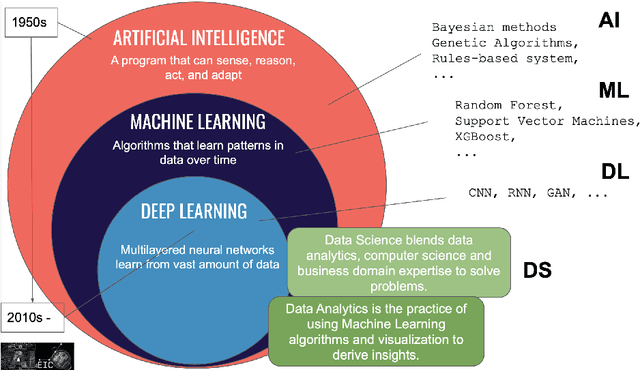
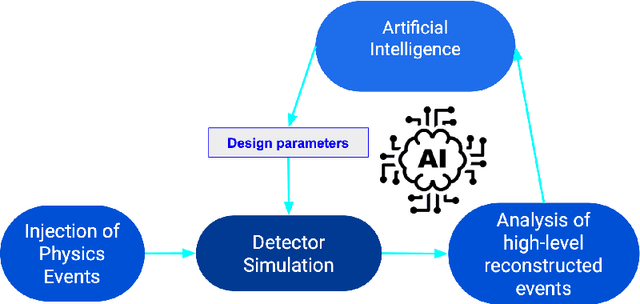

Abstract:Imaging Cherenkov detectors form the backbone of particle identification (PID) at the future Electron Ion Collider (EIC). Currently all the designs for the first EIC detector proposal use a dual Ring Imaging CHerenkov (dRICH) detector in the hadron endcap, a Detector for Internally Reflected Cherenkov (DIRC) light in the barrel, and a modular RICH (mRICH) in the electron endcap. These detectors involve optical processes with many photons that need to be tracked through complex surfaces at the simulation level, while for reconstruction they rely on pattern recognition of ring images. This proceeding summarizes ongoing efforts and possible applications of AI for imaging Cherenkov detectors at EIC. In particular we will provide the example of the dRICH for the AI-assisted design and of the DIRC for simulation and particle identification from complex patterns and discuss possible advantages of using AI.
"Flux+Mutability": A Conditional Generative Approach to One-Class Classification and Anomaly Detection
Apr 19, 2022



Abstract:Anomaly Detection is becoming increasingly popular within the experimental physics community. At experiments such as the Large Hadron Collider, anomaly detection is at the forefront of finding new physics beyond the Standard Model. This paper details the implementation of a novel Machine Learning architecture, called Flux+Mutability, which combines cutting-edge conditional generative models with clustering algorithms. In the `flux' stage we learn the distribution of a reference class. The `mutability' stage at inference addresses if data significantly deviates from the reference class. We demonstrate the validity of our approach and its connection to multiple problems spanning from one-class classification to anomaly detection. In particular, we apply our method to the isolation of neutral showers in an electromagnetic calorimeter and show its performance in detecting anomalous dijets events from standard QCD background. This approach limits assumptions on the reference sample and remains agnostic to the complementary class of objects of a given problem. We describe the possibility of dynamically generating a reference population and defining selection criteria via quantile cuts. Remarkably this flexible architecture can be deployed for a wide range of problems, and applications like multi-class classification or data quality control are left for further exploration.
AI-optimized detector design for the future Electron-Ion Collider: the dual-radiator RICH case
Nov 13, 2019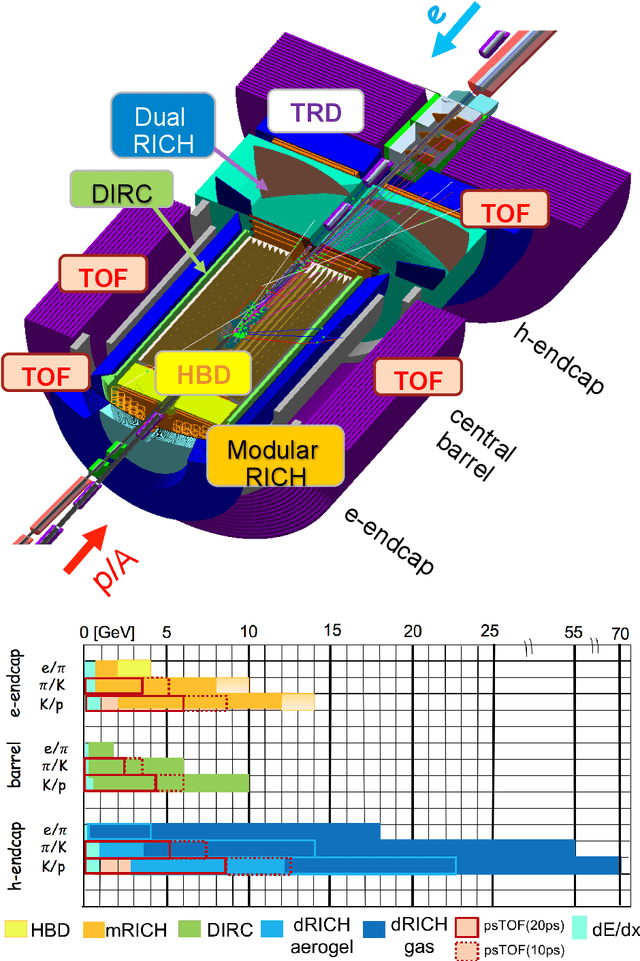
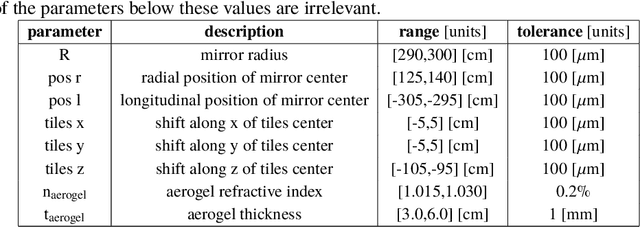
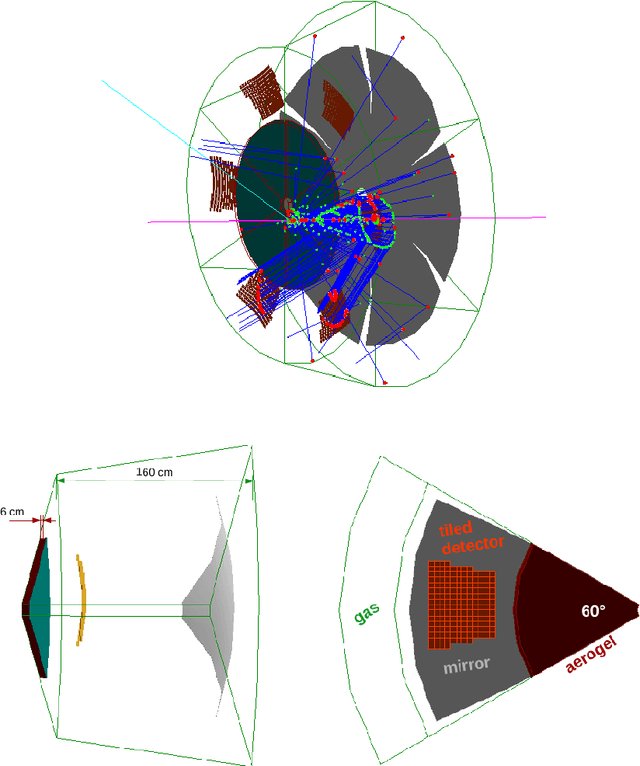

Abstract:Advanced detector R&D requires performing computationally intensive and detailed simulations as part of the detector-design optimization process. We propose a general approach to this process based on Bayesian optimization and machine learning that encodes detector requirements. As a case study, we focus on the design of the dual-radiator Ring Imaging Cherenkov (dRICH) detector under development as part of the particle-identification system at the future Electron-Ion Collider (EIC). The EIC is a US-led frontier accelerator project for nuclear physics, which has been proposed to further explore the structure and interactions of nuclear matter at the scale of sea quarks and gluons. We show that the detector design obtained with our automated and highly parallelized framework outperforms the baseline dRICH design. Our approach can be applied to any detector R&D, provided that realistic simulations are available.
 Add to Chrome
Add to Chrome Add to Firefox
Add to Firefox Add to Edge
Add to Edge